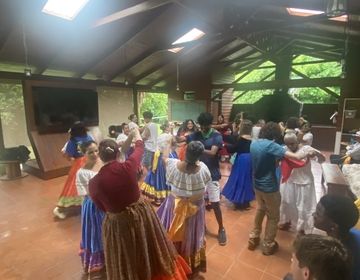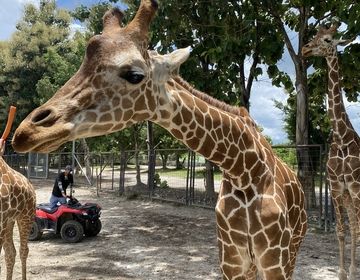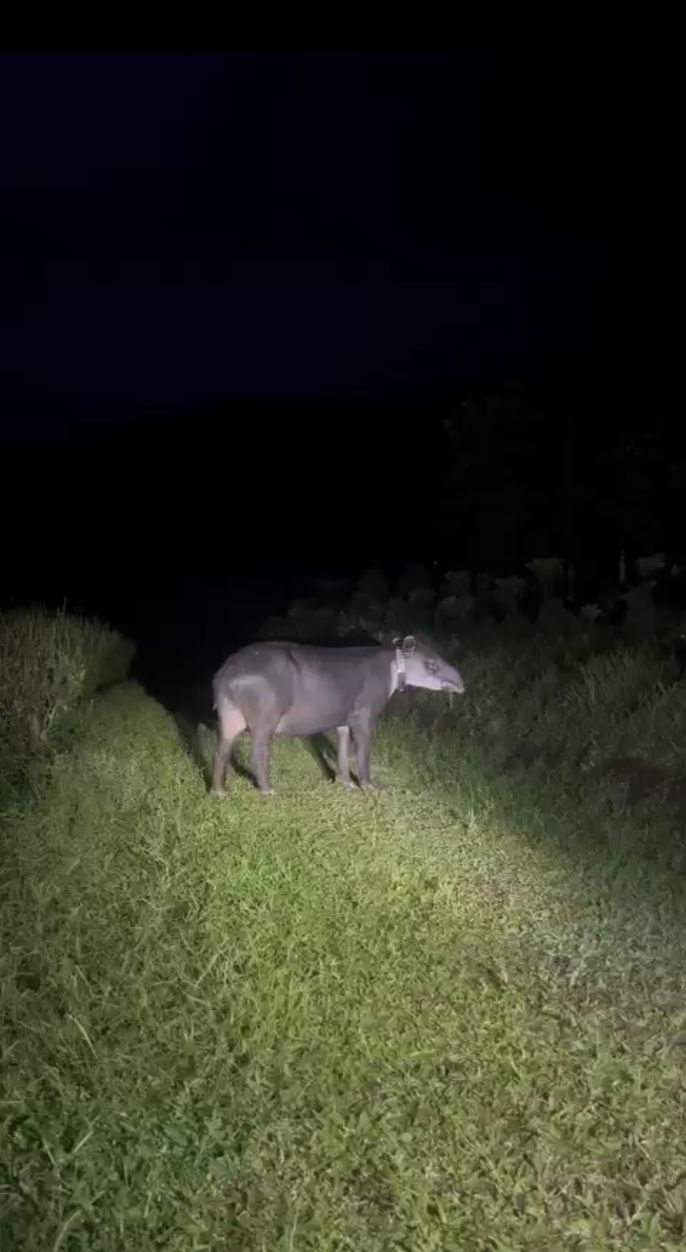Tapirs and Tubing: Weekend Adventures in Bijagua, Costa Rica
As Week 2 comes to an end and we begin the final week of Session II’s Climate Change Mitigation program here in Monteverde, the students prepared for their overnight excursion for the weekend to Tapir Valley, in Bijagua in the northern Alajuela province of the country. With 36 students and all of their accompanying bags packed into three vans, we headed off on our three-hour journey to Heliconia’s Rainforest Lodges where we would be staying for the weekend. The day started off with a traditional Costa Rican lunch at the lodge and an optional hike on the hanging bridges next to our accommodations.
Following a brief 30-minute hike and some much needed down time, the students and staff loaded the buses to drive to our night hike at the Tapir Valley Nature Reserve. There we were met by refreshments and a brief overview what we would be searching for on our tour that evening, most specifically, tapirs. Tapirs are the largest land mammal inhabiting Costa Rica and have been native to the country for up to 35 million years. These gentle giants are part of the same order as horses and rhinos (Perissodactyla) and resemble a funny mix between an elephant and anteater with the ears of a bear. They are also vegetarians, primarily feeding on aquatic grasses, leaves, and fruit that can be found gorwing abundantly in Costa Rica. They are currently an endangered species, due to pressures from human development, loss of habitat, and adverse effects of climate change, which has dwindled their population to just 5,000 worldwide.
Just 10 minutes into our hike, as the dusk was settling in over the valley, we were lucky enough to see the first glimpse of the tapirs. Our guide explained to us just how rare it was to see these animals, especially in such a short amount of time into our evening hike. He told us how people will travel for 8-hour journeys through the jungle just to catch fleeting moments with them. Not only were we able to see one, but two tapirs, Mamita and her baby. They weren’t too shy with us while we watched them grazing and walking along there way. We were lucky to get great views of them on several occasions, snapping some amazing photos and videos along the way. After seeing the tapirs, we ventured on to find frogs and snakes living in and around the wetlands. One species that we were particularly interested in was the Tlacohyla Celeste, a new species of frog that was discovered by the founder of the Tapir Valley Nature Reserve, Donald Varela.
Following the excitement of Saturday evening, we gathered together Sunday morning in the lobby of our lodge to have breakfast before heading off for another fun day of adventures. This time it would be tubing on the Rio Celeste (meaning “Celestial River”, for the lovely light blue/turquoise color of the water). Tubing here is probably not like the tubing you might think of back home, with the relaxing sounds of nature and slow floating down the river with your friends, some snacks, and a speaker. This is more like white-water tubing – an exhilarating two hours of zipping through and over rocks, crashing into your friends, and trying to stay in your tube all at the same time.
To wrap up the day, we had a nice lunch and detour to see some of the many windmills that dot the countryside in this region of Costa Rica. The Climate Change Mitigation students have been learning about different alternatives for renewable energy production, with windmills being one of these forms. Costa Rica is well known for setting international precedents in renewable energy production and other innovations in sustainable development. This was a great way to bring lessons from the classroom into real life.
As we arrive home from our weekend excursions, we look forward to the last week here in Monteverde and can’t wait to see what is to come!
Related Posts

A Colorful Finale
For our last blog post, the incredible Rama Mansour crafted a fantastic summary of our final few days. Great job Rama! The last few days here in Monteverde have been... keep reading

Unexpected Communication
This blog was written by Izaiah Smith. Izaiah is a global navigator that is flexible and is always up for a challenge. Whether that is learning Spanish or meeting new... keep reading

Tubing in Liberia!
Once again, one of our amazing Global Navigators took over the blog posting honor! Kayla Williams created a fantastic update from our weekend in Liberia. Here is what she had... keep reading

